Gliding down a forest trail, fresh snow falling as the sun sets, may be one of the most peaceful ways to enjoy the great outdoors. I’ve been a cross-country skier since high school, and now my family looks forward to our winter outings.
No matter what I’m doing, I’m looking for wildlife. It’s hard-wired. But in the mountains near my Idaho home, wildlife can at first glance appear to be in short supply come winter. The snows are deep and the temperatures are frigid. Most animals have either hibernated or migrated. It’s not the Serengeti. You have to look. Really look.
But a curious naturalist can always find something interesting. I’ve found that there are some wildlife encounters that are best on skis. Here are some of my favorite species and places.
What wildlife do you see while skiing or snowshoeing? Leave your suggestions in the comments.

Woodpeckers
I spend a lot of time skiing in high-elevation ponderosa pine forests, and most birds find the going tough. But not birds that rely on dead trees. For them, the winter presents no problems. I’ve had my closest sightings of pileated woodpeckers – sometimes just a few feet away – while on skis.
Pileated woodpeckers don’t migrate. The species is highly territorial and a monogamous pair inhabits and defends a territory year round. As you ski, you may see a tree full of holes and piles of woodchips will pile up on the snow. Stake out such a tree and you’re almost certain to see a pileated. They often return to the same tree year after year.
Watching woodpeckers of any species is always fun, even for kids. The close-up views afforded by skis allows you to see and hear their raucous hammering. On our last snowshoeing outing, my family spent 30 minutes watching a hairy woodpecker in its frenetic search for insects.
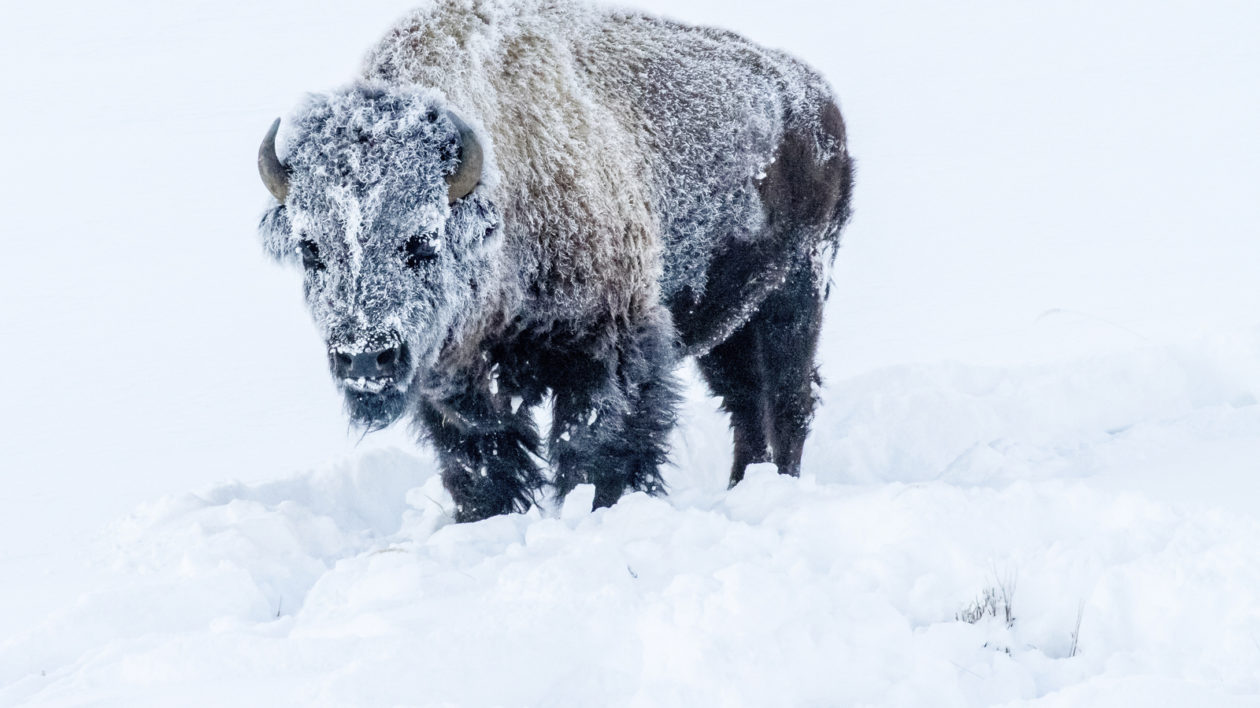
Yellowstone
Yellowstone National Park is arguably the finest destination in North America for combining cross-country skiing and wildlife watching. The easiest way is to take a snow-cat from West Yellowstone in to lodging at the Old Faithful Geyser Basin. From there, you can explore various trails and are sure to encounter lots of bison, elk, coyotes and bald eagles. Best of all, the crowds are tiny compared to the summer. You will see few people out on the trails. The sight of a frost-tinged shaggy bison is unforgettable. We even had one eruption of Old Faithful to ourselves.
In the north of the park, the road to Mammoth remains open year round. This is a great option if you want excellent sightings of wolves. The Yellowstone Forever Institute offers a variety of winter programs, ranging from wolf watching to tracking to intensive classes that incorporate skiing.
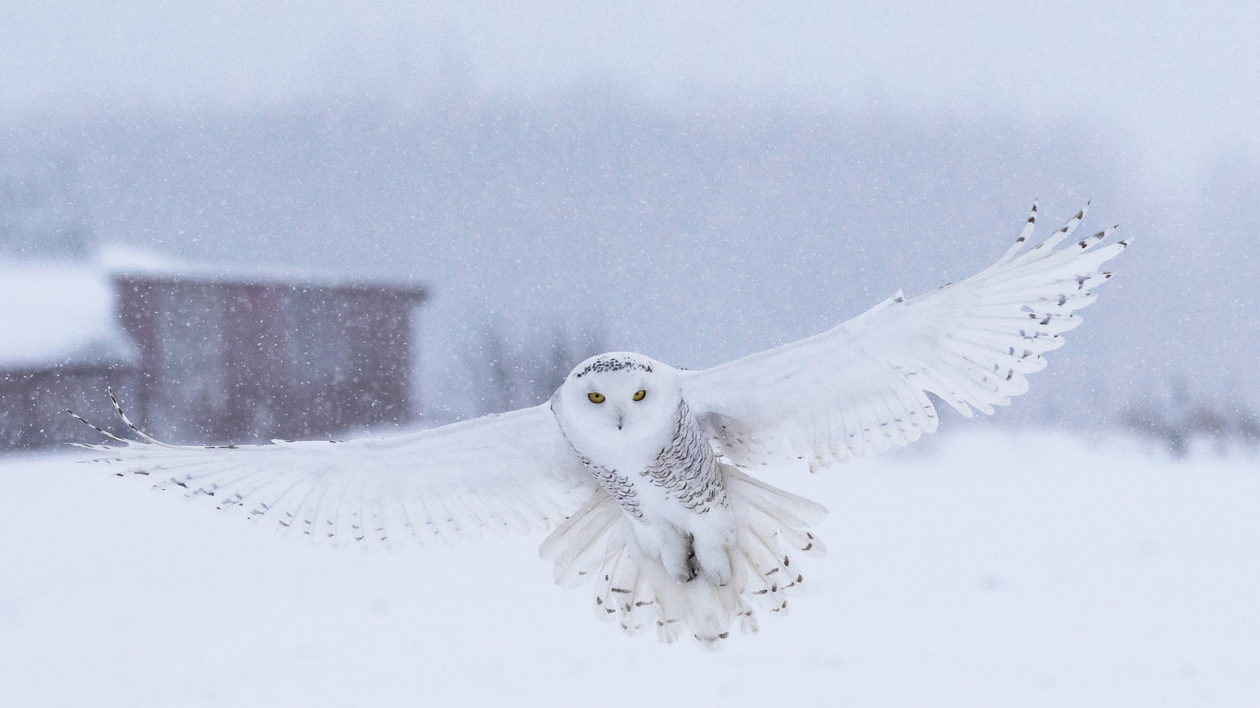
Winter Bird Specialties
I saw a lot more birds while cross-country skiing in Pennsylvania, where I grew up. The snows never stuck around long, and songbirds thrived in the deciduous forests. The colorful cardinals and blue jays always kept me company.
Wherever you ski, you should keep your eye out for more unusual birds. Several species are best seen in winter, from snow buntings to Bohemian waxwings. (Check out this list of 10 special winter birds). In certain years, even rarer northern birds will show up outside their usual range.
Owls are vocal in early winter, and quite adept at hunting in the snow. Snowy owls, northern hawk owls and other northern species appear in more southerly latitudes when there are fewer rodents in their usual winter range.
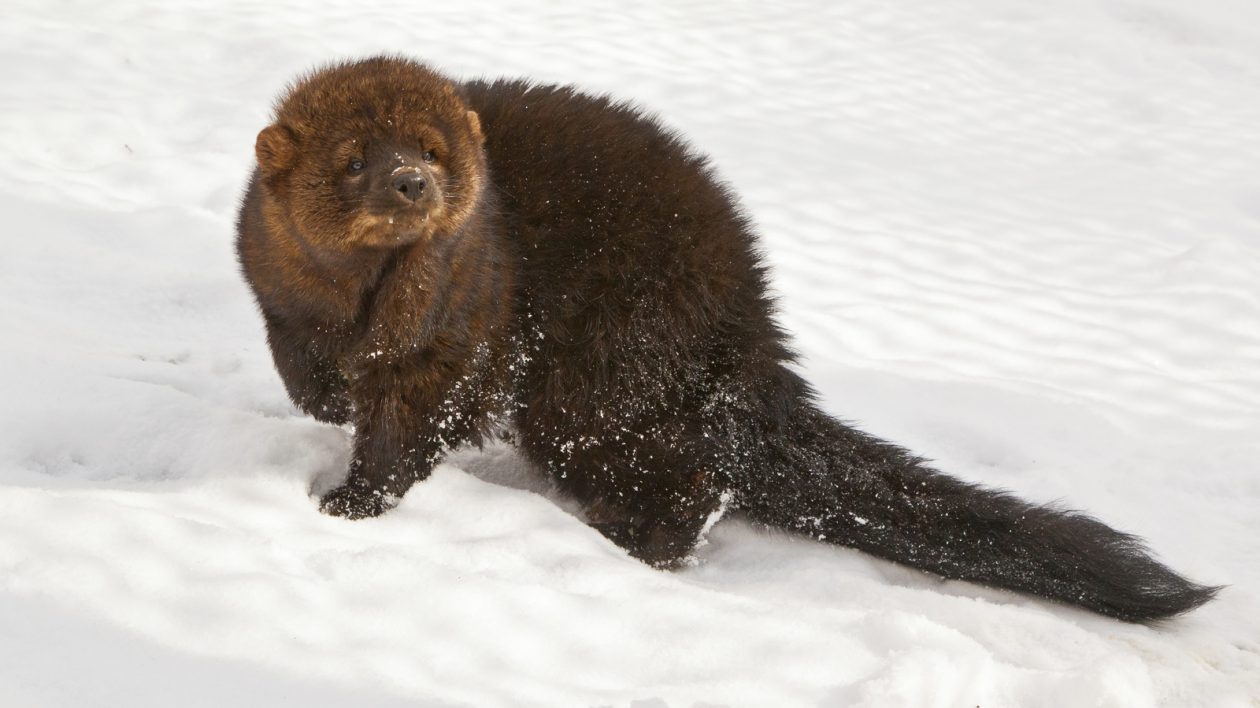
Predators in Winter
In the Upper Midwest and Northeast, two members of the weasel family have made impressive comebacks: American martens and fishers. Both of these furry critters are adept snow hunters, often chasing pine squirrels and porcupines through the trees.
Three weasel species (long-tailed, short-tailed and least) turn white in the winter. Often called ermines, these are striking little animals, and they can be quite bold and curious around humans.
Both of these species were once considered creatures of wilderness, but reintroduction efforts have shown that they are surprisingly adaptable. Gliding quietly on skis is a great way to catch a glimpse of these elusive animals.
The Canada lynx is one of the ultimate sightings in North American mammal watching. These beautiful cats are often rare and elusive, but northern Minnesota has emerged as a great destination, particularly in winter. You would also have the chance at several owl species and the aforementioned martens.
Coyotes and red foxes are actively hunting, often listening for rodents scurrying under the snow then dramatically pouncing and digging. These animals are well-furred at this time of year, making for great photography.
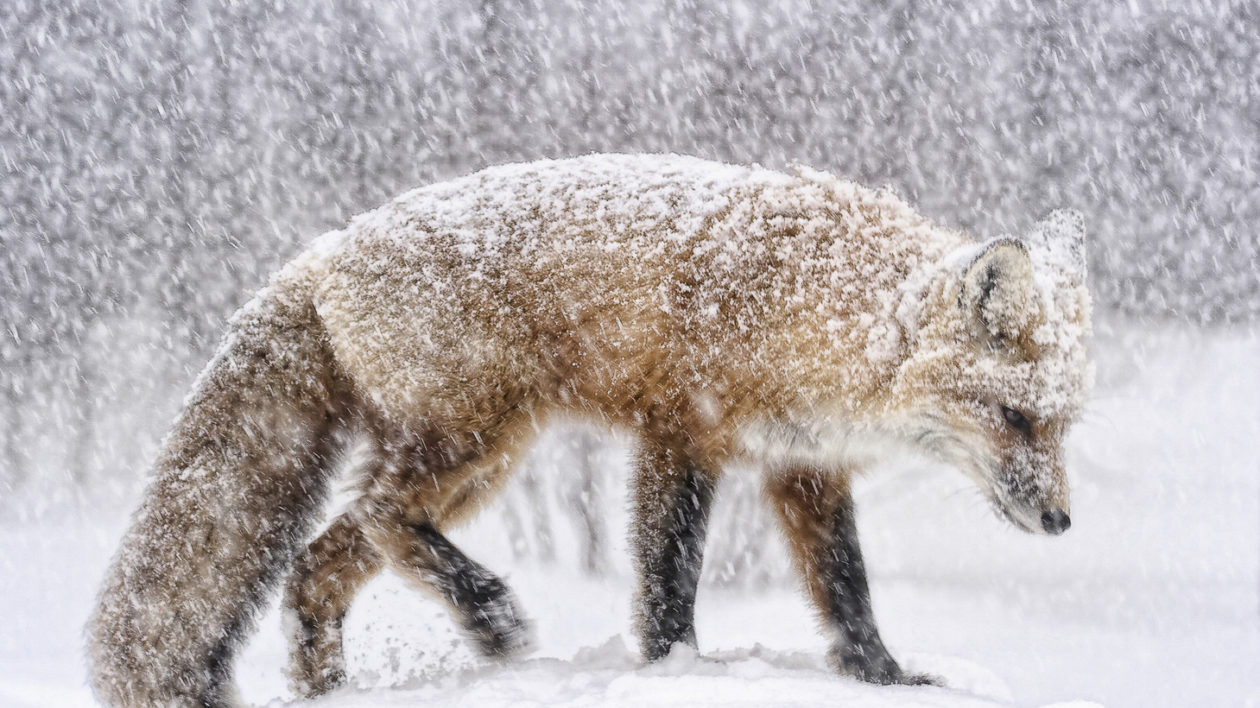
Photo © Cathy Gauthier/TNC Photo Contest 2018
Tracking
Regardless of the season, many wild animals are not easy to see. But you can often find signs of them. In winter, it’s quite easy to see tracks. As you cover the miles on your skis, keep an eye out for what crossed your trail.
You can often find tracks of the species already mentioned in this blog. I’ve found tracks from herds of elk, predators chasing prey, and, once, a mountain lion that had bounded down the trail ahead of me.
Tracking is an easy activity to learn. Yes, there are many nuances and some tracks are difficult to tell apart. I highly recommend Olaus Murie’s classic Peterson’s Field Guide to Animal Tracks. It contains exhaustive information on track size, patterns, scat, dens and other sign left by animals. It’s like a mystery-solving handbook. I wore mine out as a kid and still refer to it frequently.
To get started, you can also check out our quick guide to common wildlife tracks.
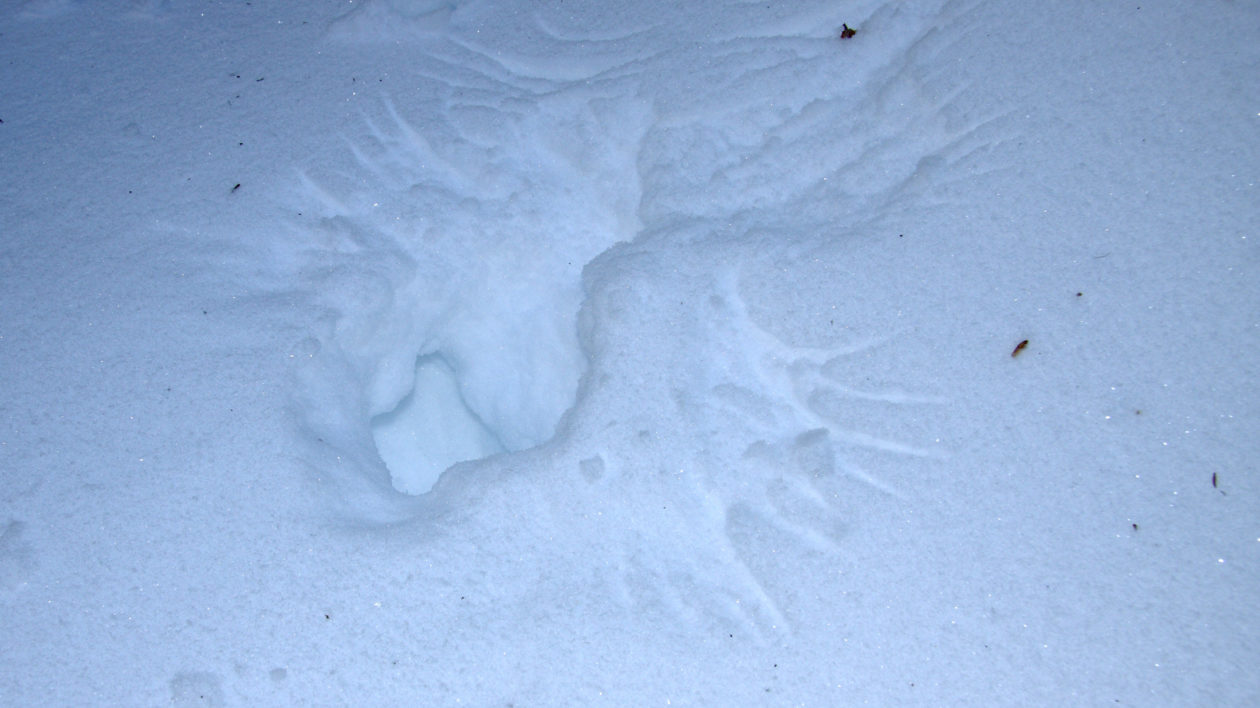
Bird “Snow Angels”
Perhaps the best track to find are “snow angels” made by birds. The most dramatic consists of bird wing outlines brushed delicately on the snow’s surface. It is beautiful, but it’s a deadly beauty: it’s what happens when a raptor swoops in and picks its prey off the snow.
Or the wings might belong to a ruffed grouse. These birds escape the harshness of winter by plunging from the air into deep snow. The snow melts around their body and forms a snug snow cave. When startled, the grouse will burst from the cave, leaving its own “snow angel” behind.
Since grouse don’t dig their snow cave, you can’t really track the bird. As such, finding evidence of one is one of tracking’s most difficult feats.
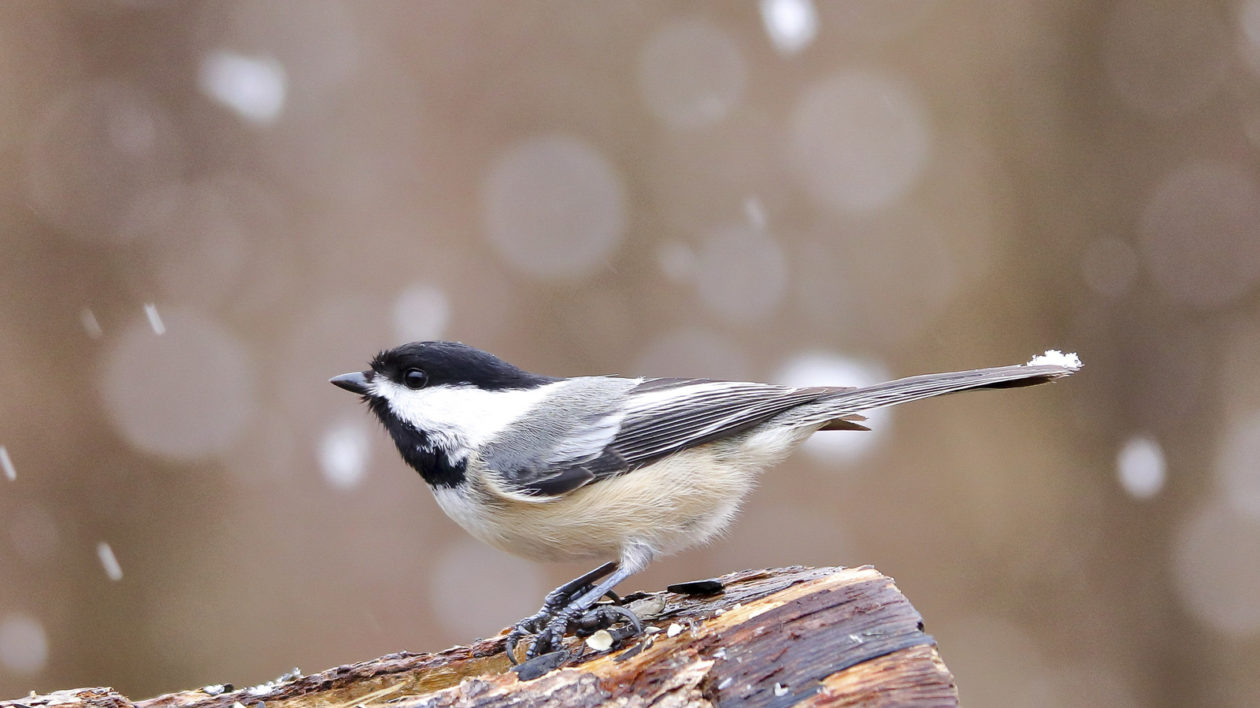
Stop, Look, Listen
You’re skiing through a beautiful mountain pass, working up a sweat, when you pause for a break. Silence. Absolute, pure stillness.
But listen. The croak of a raven sounds in the distance. If you wait a few minutes, you may see it foraging or calling to other ravens. It might even investigate you, to see if you might leave a treat behind.
Or perhaps you’ll notice the chittering of a pine squirrel. Ski closer, as these little rodents can be really entertaining to watch, especially if one is dismantling a pine cone over your head.
Look closely and you might notice more subtle beauties around you. You might be surprised by a spider walking over snow. Yes, a spider. Or take in the colorful lichens growing on rocks. Everywhere you look, life is finding a way to survive and thrive in this winter wonderland.
The outdoors is more than an open-air gym. Look around and take in the creatures that live there.
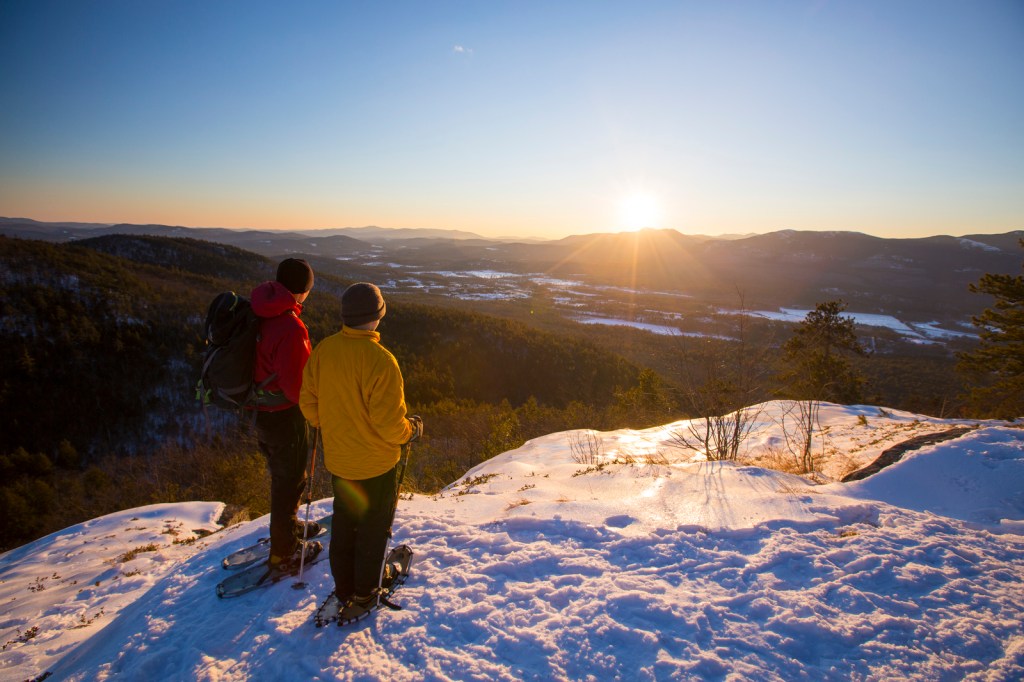



Thanks for the great article. I am fortunate to be able to cross country ski around a small lake near my home in the Yellowstone caldera and am always fascintaed to see the “wildlife highway” of foot prints around the perimeter of the lake. Otters, fox, coyote, mink and others use the ice along the edge of the lake to travel, possibly because traveling is easier there due to less snow than on land. It is fun trying to figure out who made which tracks and where they might have been traveling.
Wonderful article. But why open it with a photo of…folks on snowshoes? This lifelong cross-country skier and winter wildlife observer would like actual skis featured, please!
Thanks for your comment. The story includes wildlife watching on both skis and snowshoes. The two activities often occur in the same places. I do both, as do many others. Glad you enjoyed the story. Matt
Earlier this week I followed fox tracks down a freshly groomed ski trail. At three places, the tracks stopped, and there was an small area of messy snow. I swear the fox must have sat down to scratch himself.
I enjoy ski-by-winter tree identification, too. Some species hold onto their seeds just a little longer than others, and the blank canvas makes them easier to spot than in the summer. Recently I’ve been noticing the seeds of basswood, ironwood, maples, and oaks all drifting into my ski tracks. Once I see the seeds, I can look up and spot the tree.